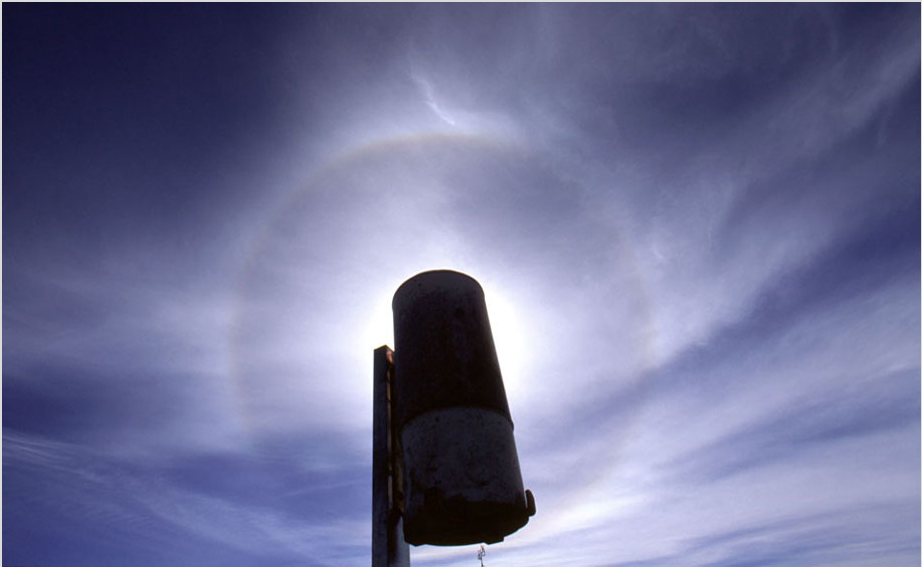22 degree halo Spanish Canary Islands
Exploring the 22 Degree Halo Phenomenon in the Spanish Canary Islands
When it comes to atmospheric optics, the Spanish Canary Islands offer a fascinating playground for observing various optical phenomena. One such phenomenon is the 22 degree halo, a captivating ring of light that encircles the sun or moon. In this article, we will delve into the intricacies of the 22 degree halo and its occurrence in the beautiful Spanish Canary Islands.
Understanding the 22 Degree Halo
The 22 degree halo is an optical phenomenon that manifests as a circular ring of light with a radius of approximately 22 degrees around the sun or moon. It is caused by the refraction and reflection of light passing through hexagonal ice crystals present in high-altitude cirrus clouds. These ice crystals act as prisms, bending and splitting sunlight into its component colors, resulting in the formation of the halo.
Atmospheric Conditions Favorable for Halo Formation
The Spanish Canary Islands, renowned for their clear skies and favorable atmospheric conditions, provide an ideal environment for witnessing the 22 degree halo. The islands' geographic location, situated off the northwest coast of Africa, ensures a combination of stable air masses and limited light pollution, making it an excellent destination for both amateur and professional atmospheric observers.
Observing the 22 Degree Halo in La Palma
La Palma, one of the Spanish Canary Islands, offers exceptional opportunities for witnessing the 22 degree halo phenomenon. The Observatorio del Roque de los Muchachos located on this island provides an ideal vantage point due to its high elevation and minimal light interference. Astronomers and astrophotographers flock to this site to capture stunning images of the halo, showcasing its ethereal beauty against the island's picturesque backdrop.
Factors Influencing Halo Visibility
While the 22 degree halo can occur under a variety of atmospheric conditions, certain factors can enhance or diminish its visibility. These factors include:
- Cloud cover: Cirrus clouds, which are thin and wispy, are the primary cloud type associated with halo formation. A clear sky or a thin veil of cirrus clouds allows for optimal visibility of the halo.
- Sun or moon elevation: The halo is most visible when the sun or moon is relatively high in the sky. As they approach the horizon, the halo may appear distorted or partially obscured.
- Ice crystal alignment: The orientation and alignment of the hexagonal ice crystals play a crucial role in the formation and visibility of the halo. When the crystals align horizontally, they produce a more distinct and vibrant halo.
Other Optical Phenomena Associated with the 22 Degree Halo
The 22 degree halo often shares the sky with other atmospheric optical phenomena, adding to the spectacle. Some of these phenomena include:
- Sun dogs: Also known as parhelia, sun dogs are bright spots that appear on either side of the sun, forming a tangent to the 22 degree halo. They result from the refraction of sunlight by plate-shaped ice crystals.
- Upper tangent arc: This arc appears as an extension of the 22 degree halo above the sun, curving upwards. It is caused by sunlight passing through randomly oriented ice crystals.
- Circumzenithal arc: Positioned directly above the observer's head, this arc forms an upside-down rainbow-like shape. It occurs when sunlight is refracted through horizontal ice crystals.
Photographing the 22 Degree Halo
Capturing the beauty of the 22 degree halo through photography requires careful planning and technique. Here are some tips for photographing this mesmerizing phenomenon:
- Use a wide-angle lens to capture the entire halo and its surrounding atmospheric phenomena.
- Include interesting foreground elements to add depth and context to your images.
- Experiment with different exposure settings to achieve the desired balance between the brightness of the halo and its surroundings.
- Consider using a polarizing filter to reduce glare and enhance the halo's visibility.
- Take advantage of the golden hours (sunrise and sunset) for softer lighting and a more dramatic atmosphere.
Conclusion
The 22 degree halo is a captivating atmospheric optical phenomenon that adds a touch of magic to the skies above the Spanish Canary Islands. With their favorable atmospheric conditions and breathtaking landscapes, these islands offer a unique opportunity to witness and capture the beauty of the halo. Whether you are an avid photographer or simply an admirer of natural wonders, a visit to the Spanish Canary Islands might just reward you with an unforgettable experience of the 22 degree halo phenomenon.

22º halo La Palma Spanish Canary Islands imaged 2004 by Nik Szymanek (astrophotography site book ). The sun shield is a calibration device for a transit telescope at the Observatorio del Roque de los Muchachos (IAC). ©2004 Nik Szymanek.
Note: this article has been automatically converted from the old site and may not appear as intended. You can find the original article here.
Reference Atmospheric Optics
If you use any of the definitions, information, or data presented on Atmospheric Optics, please copy the link or reference below to properly credit us as the reference source. Thank you!
-
<a href="https://atoptics.co.uk/blog/22-degree-halo-spanish-canary-islands/">22 degree halo Spanish Canary Islands</a>
-
"22 degree halo Spanish Canary Islands". Atmospheric Optics. Accessed on November 26, 2024. https://atoptics.co.uk/blog/22-degree-halo-spanish-canary-islands/.
-
"22 degree halo Spanish Canary Islands". Atmospheric Optics, https://atoptics.co.uk/blog/22-degree-halo-spanish-canary-islands/. Accessed 26 November, 2024
-
22 degree halo Spanish Canary Islands. Atmospheric Optics. Retrieved from https://atoptics.co.uk/blog/22-degree-halo-spanish-canary-islands/.